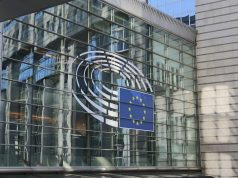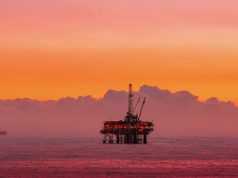| By Elena Johansson
The insurance group seeks to reduce emissions in the real economy as part of its responsible investment policies published in March, an expert of the firm has said.
Peter Sandahl, Head of Sustainability at Nordea Life & Pension (L&P), explained: “We want to, as fast as possible, transition our portfolios, so they are aligned with what science tells us is required, while continuously also do that in a way which is not just divestment, but also trying to make as much contribution to real economy impact as well.”
L&P, a subsidiary of Nordea Bank, pledged to reduce its carbon emission intensity for listed equities, corporate bonds and real estate by at least 25% by the end of 2024 with 2019 as a baseline, to reach the bank’s net zero emission target by 2050.
To follow through on its ambition, L&P recently tightened its asset manager requirements.
Targets for Third-Party Asset Managers
In May it required from its third-party asset managers to set a net zero target in line with a 1.5-degree scenario by 2024.
According to Sandahl, the majority of L&P’s €61.6 billion assets under management (AUM) are held by other asset managers, while a smaller part is directly managed. Nordea Bank’s total AUM stood at €372 billion in Q1.
L&P oversees the transition strategies of third-party asset managers and also collaborates with the group’s manager, Nordea Asset Management, regarding internal mandates.
Non-profit organisation Reclaim Finance commended in a statement in February that the bank’s net zero target covers both its investment and lending portfolio, as the targets of Allianz and Axa are limited to investments only.
However, the NGO assessed a comparative “lack of ambition” for the bank regarding minimal exclusion criteria for the coal, oil and gas sector.
In terms of coal, Nordea does not invest in companies that have large and sustained exposure to thermal coal mining with more than 30% of their revenues derived from sales of coal products, and which lack a meaningful opportunity to diversify away from coal.
Managing risks with double materiality
The bank’s recent efforts have focussed on integrating climate risk in its credit risk framework. The integration of other financial risk frameworks is planned to start in 2021, according to Nordea’s 2020 Sustainability Report.
L&P applies the concept of double materiality to its investments.
“We consider two different perspectives: One is double materiality, looking at how our portfolios are impacting the society or the world as such, and how [the environment] impacts our portfolio,” Sandahl said.
In an impact and materiality assessment last year, Nordea found that physical and transitional climate-related risks are material to the firm’s credit risk profile. In the same year, L&P further integrated climate risks in its investment decision making to assess both transition and physical risks under different climate scenarios.
The assessment found that 10 Sustainable Development Goals are material for its business, either negative or positive from an impact perspective, and guided Nordea in setting its 2023 environmental, social and governance targets.
The responsible investment policy that L&P published following this assessment, applies four principles:
- exclude the worst by applying minimum requirements;
- prefer the best by striving to invest in companies and use asset managers which are at the forefront of ESG integration;
- make a difference by acting as an active owner and by engaging with companies and asset managers; and
- be transparent.
Engaging based on relevance, screenings and ratings
The firm evaluates and rates its asset managers on criteria, such as whether they use in-house ESG research and their voting and engagement practices.
“We only select asset managers who meet the required rating for that specific asset class,” L&P’s responsible investment policy says.
The firm engages with companies and asset managers to improve the long-term performance, risk management practices, ESG standards of its investments and to contribute to positive change in the real economy.
Engagements are focused on prioritised thematic areas – such as climate change and human rights – on largest holdings, on sectors and companies where ESG risk is deemed to be material and on companies fulfilling certain relevance criteria, according to L&P’s engagement policy.
To identify issues, L&P screens its holdings and asset managers regularly, using also data from MSCI, CDP, the Transition Pathway Initiative (TPI) and the Carbon Risk Real Estate Monitor (CRREM), and resorts to divestment if a desired outcome is not achieved.
Sandahl explained that dialogues with its asset managers include how they intend to reduce emissions over time in the real economy.
“It’s important for us to understand the manager’s approach and strategy to reducing emissions in a way which is both science based and also has an emphasis on contributing to emission reductions in the real economy, i.e. not just divesting,” he said.
L&P makes its investment decisions for companies by using both backward looking metrics, such as carbon emission intensity and absolute carbon emissions, as well as forward looking metrics, such as science-based targets, capex, transition plans and climate value at risk measures, he added.
Nordea Bank has begun to assess the alignment of economic activities with the EU Taxonomy criteria, as well as the alignment of its green bond asset categories with the EU Green Bond Standard, the Sustainability Report says.
It has also developed a methodology for handling Principal Adverse Impacts as required by the EU’s Sustainable Finance Disclosure Regulation (SFDR).
L&P’s policy includes minimum safeguards in areas based on international norms, which cover all its own managed assets.
“We of course also look at how our investments are contributing positively, and we are addressing how they potentially [effect] impact negatively,” Sandahl said.
“And naturally, we have a lot of indicators, in the climate change area, in human rights, in labour rights, in other social areas and governance-related indicators.”








